
Iris Van Herpen chose the terrestrial setting of a small garden in Paris to unveil her Haute Couture Fall/Winter 2023 collection; a 16-piece interchange between aquatic architecture and bionic innovations set against sumptuous sartorial techniques that reinforce the Dutch couturier as the pinnacle of experimentation and exploration.
Fluidity and fantasy are synonymous with Van Herpen’s offerings yet, unfittingly for these precarious times, this collection doesn’t revel in providing an ethereal reprieve from the ecological ephialtes we’re currently enduring but rather offers an anything-but-quotidian uniform for those threatened by expeditious rising sea levels.
Van Herpen’s own home, the Netherlands, is perpetually vulnerable to the impacts of climate change with the unprecedented sea change one day likely to engulf the “low country” in water. Yet, rather than use the Haute Couture Fall/Winter 2023 season as a medium for espousing Van Herpen’s climate politics, she’s used this platform as a vessel to extrapolate what this new hybrid form of living would look like. Or, more importantly, what an amalgam of tellurian and marine dressing would look like.
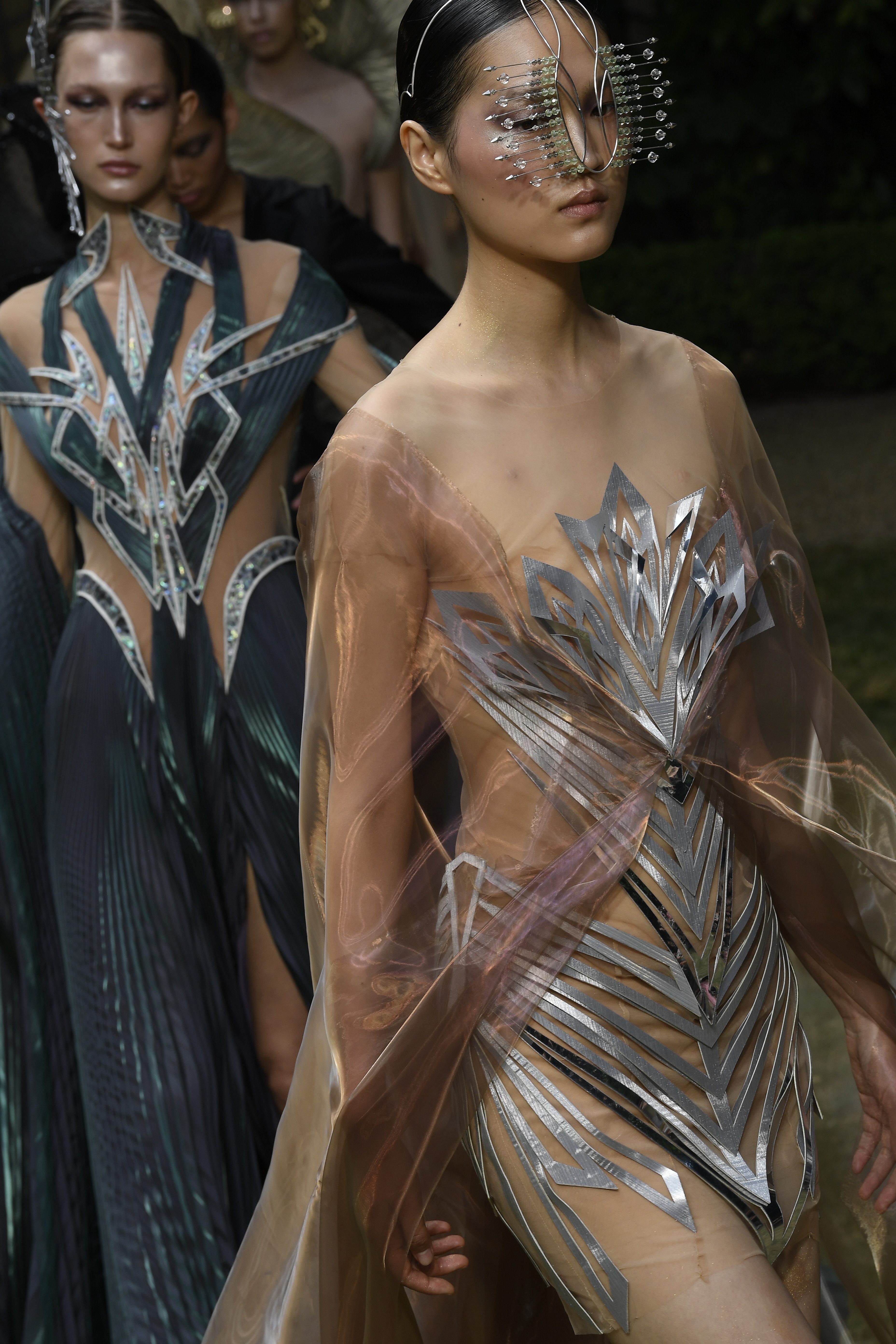
On a theoretical level, Van Herpen quotes projects like Oceanix—a sustainable floating shelter dubbed as the “next frontier for human habitation” with a prototype being built in South Korea’s port city Busan—or the evocative buildings conjured by French underwater architect and oceanographer Jacques Rougerie as inspiration.
On a conceptual level, Van Herpen applies her distinctly futuristic and technological design methodology to appropriate the geometric structures envisioned for littoral cityscapes into sartorial marvels. An apt thesis for a collection entitled “Architectonic”.
Read more: How Fashion’s Past Informs Its Future
Just as Oceanix and Rougerie’s designs strike a harmonious balance between referencing and influencing the oceanic environs, Van Herpen’s otherworldly silhouettes bridge the gap between wearable and functional designs in acclimatising to your surroundings. “I wanted to bring the structural element of architecture in a very fluid way,” Van Herpen explained backstage at the show. “I wanted the garments to live, move, and breathe.”

It’s not difficult to draw parallels between this collection and conceptual marine life itself, especially in a landscape proliferated by an obsession with #mermaidcore and aquatic adjacent motifs, but Van Herpen’s collection takes a more cerebral approach to explore the science of architecture through a pelagic lens. Indeed, avant-garde gowns rival the underwater wardrobes of the inhabitants of Atlantis.
Amongst the laser-cut geometry and embroidered mandala-esque configurations that adorns diaphanous dresses, Van Herpen has forged her dialogue and pioneered her design techniques. The iridescent seashell motifs are a trompe-l’œil, with this high-shine exoskeleton a result of injecting marble-textured silicone into bonded moulds, giving the appearance of an abalone shell. A process Van Herpen calls “Biophilic”.
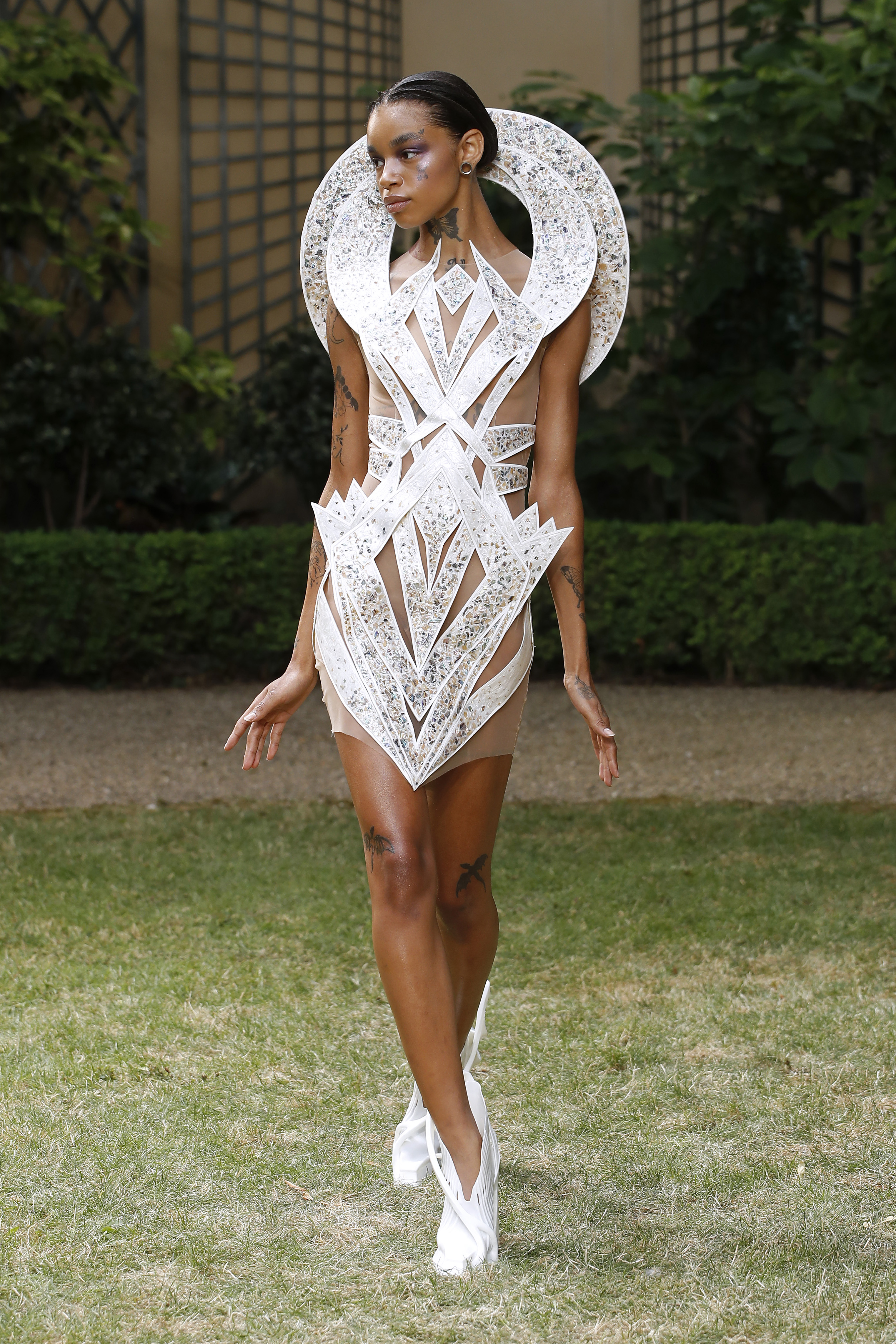
The “Oceanix” technique sees graphic polygon patterns protrude from the wave-esque body. Elsewhere, liquid silk fabric in hues ranging from metallic seafoam to glistening pearls were either pleated or softly draped to evoke the sensation of light glistening upon the horizon at golden hour. This oceanic movement is well within Van Herpen’s wheelhouse and her idée fixe, with both her Spring 2021 and Spring 2023 couture collections underpinned by marine influences.
However, for this Fall season, the themes become more pertinent by Van Herpen’s eschewing a far-flung or inconceivable world for something more pertinent. A reality likely realised within our lifespan with these designs reached for when descending to our submerged cities rather than exclusive to the red carpet.
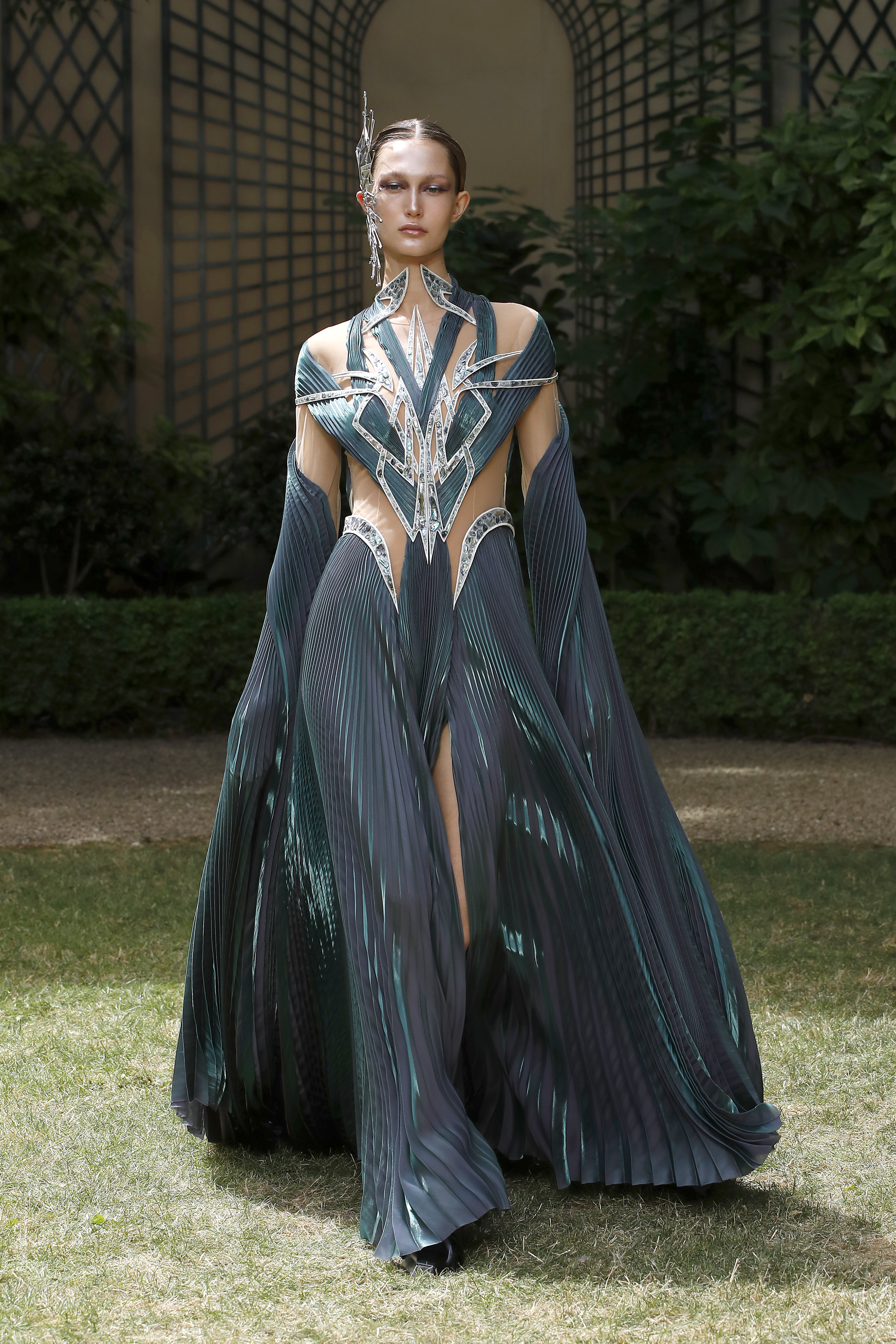

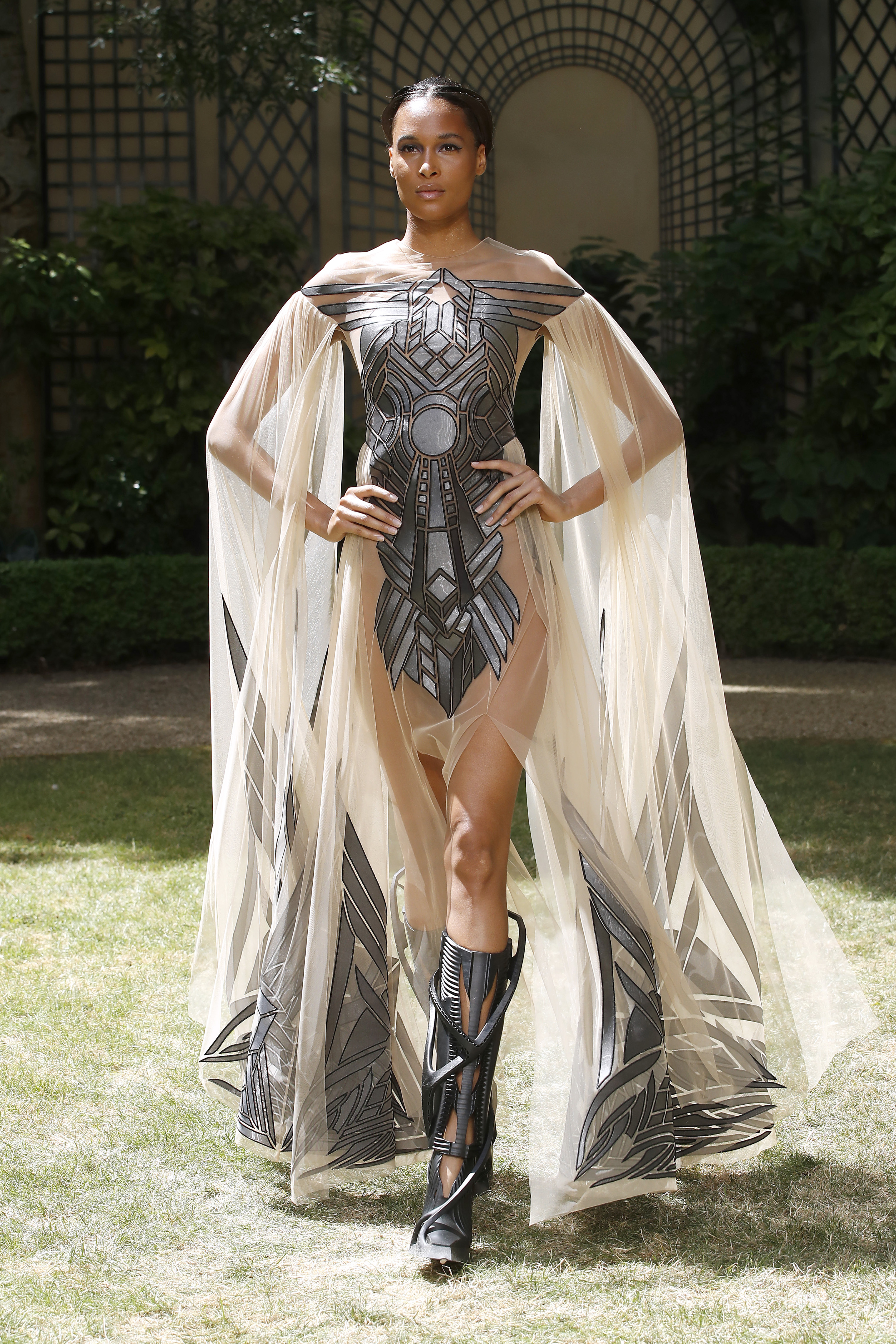
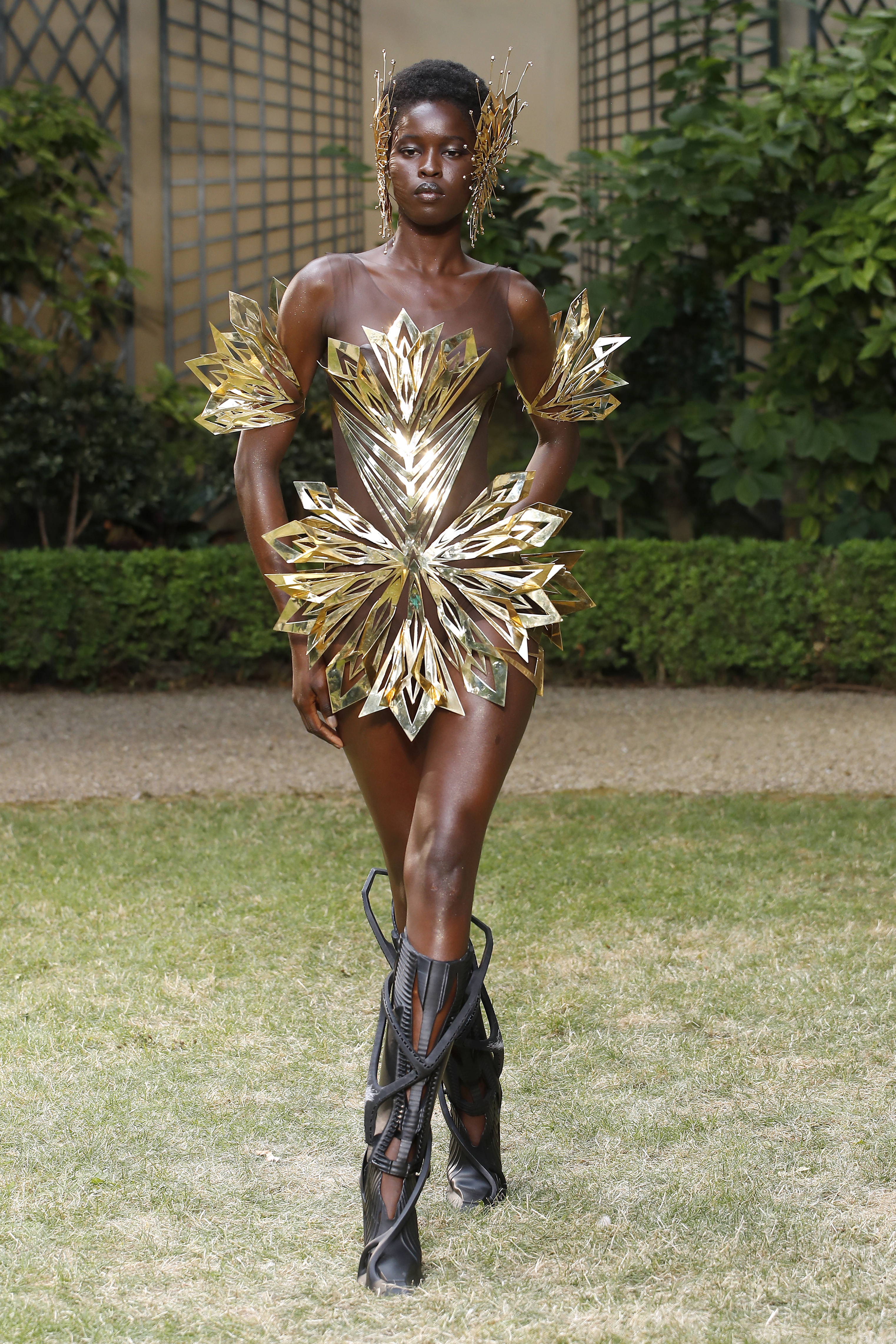
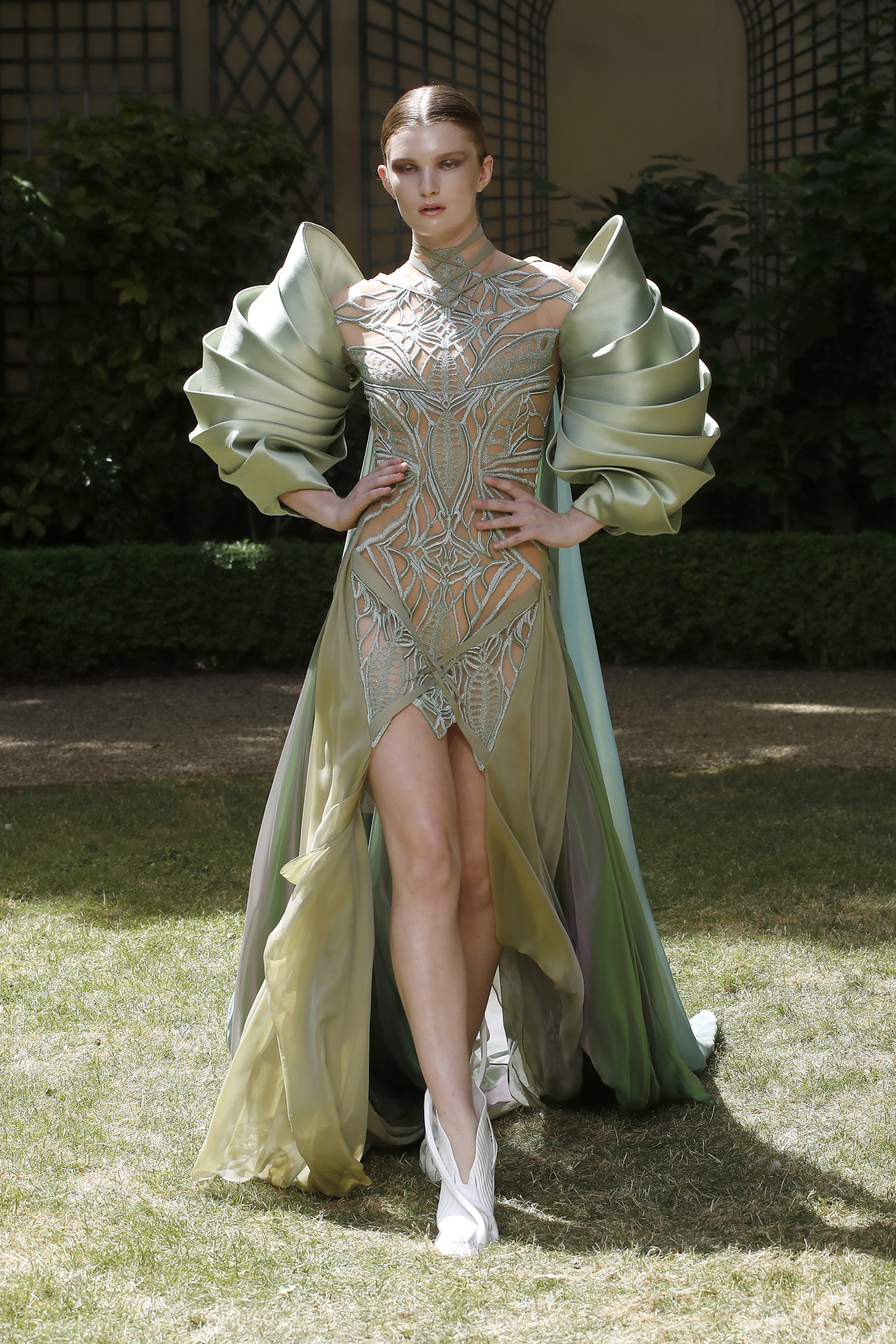
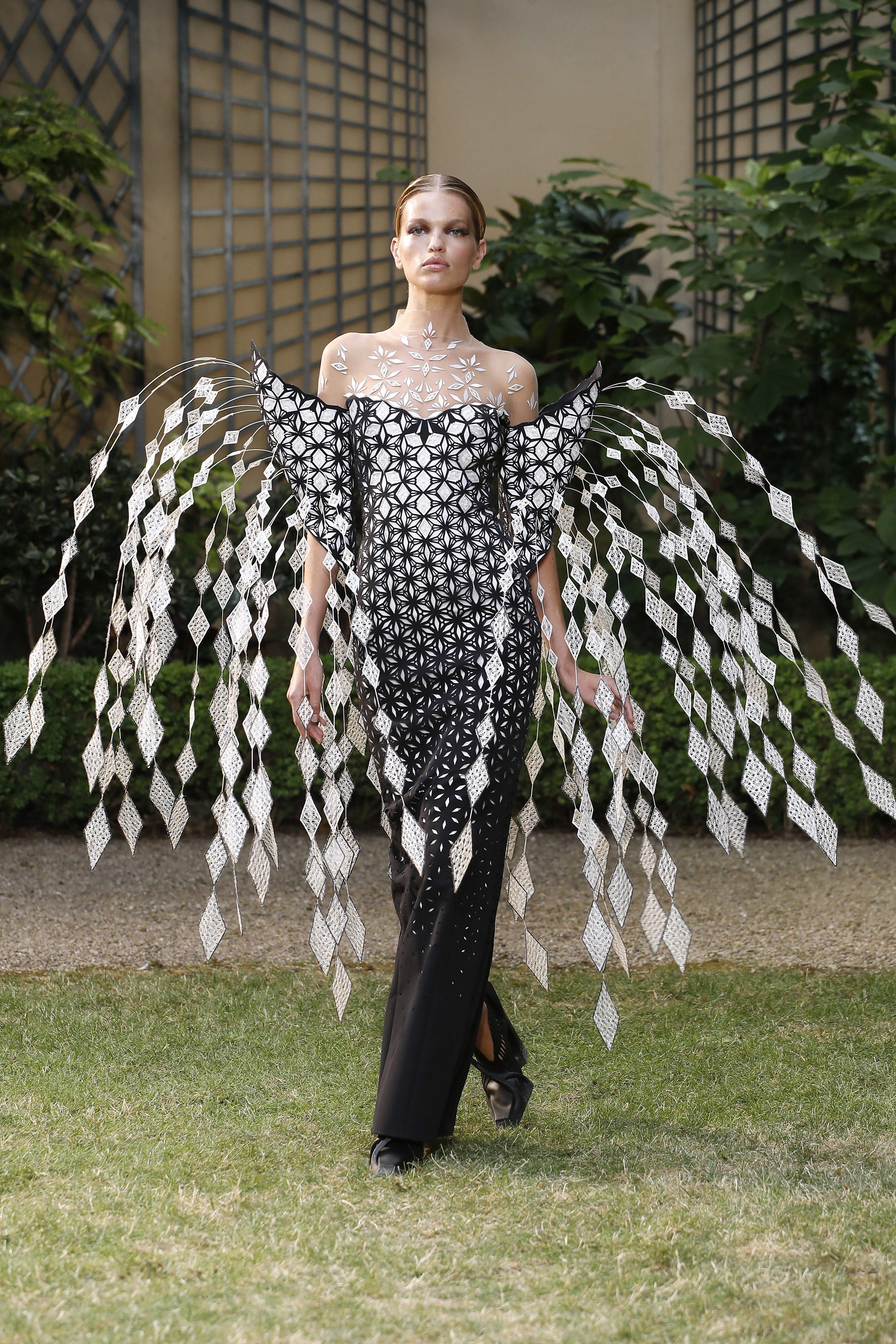
Keep up with all the Haute Couture stories here.
This story first appeared on GRAZIA International.
